Atomic Coverup Redux: 61 Years After the First Bombs FellEditor and PublisherAug. 07, 2006 |
Popular 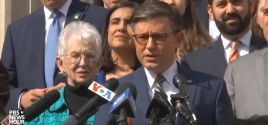
Mike Johnson Pushes Debunked Lie That Israeli Babies Were 'Cooked in Ovens' On October 7
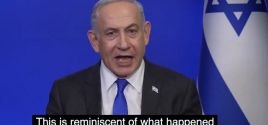
'It Has to Be Stopped': Netanyahu Demands Pro-Palestine Protests at U.S. Colleges Be Shut Down
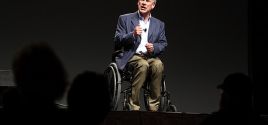
'These Protesters Belong in Jail': Gov. Abbott Cheers Arrest of Pro-Palestine Protesters at UT Austin
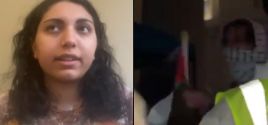
Claim Jewish Student Was 'Stabbed In The Eye' by Pro-Palestine Protester Draws Mockery After Video Released
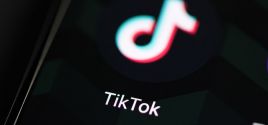
'We Aren't Going Anywhere': TikTok CEO Vows to Fight TikTok Ban in Court
 With nuclear dangers growing again, there is still much to learn from the only two uses of atomic weapons in war. Now comes word of a forthcoming book that compiles the long-suppressed dispatches written by famed reporter George Weller, the first American to arrive in Nagasaki after the bombing. By Greg Mitchell (August 06, 2006) -- One year ago, just before the 60th anniversary of the atomic attacks on Hiroshima and Nagasaki, E&P described, for the first time in the U.S., the contents of dispatches filed by a famed American reporter from one of the atomic cities, but suppressed in 1945. Some of them had finally been published last year in the Japanese daily, Mainicihi Shimbun. A year later comes word that they will be gathered in a hardcover book, "First Into Nagasaki," to be published this December by Crown, edited and explained by the man who found them, Anthony Weller. It was his father, George Weller, who had written the historic dispatches. According to the publisher, Walter Cronkite will be providing an introduction to the 288-page volume. In case you missed it, here is my exclusive report from June 16, 2005. *** One of the great mysteries of the Nuclear Age was solved today: What was in the censored, and then lost to the ages, newspaper articles filed by the first reporter to reach Nagasaki following the atomic attack on that city on Aug. 9, 1945? The reporter was George Weller, the distinguished correspondent for the now-defunct Chicago Daily News. His startling dispatches from Nagasaki, which could have affected public opinion on the future of the bomb, never emerged from General Douglas MacArthur's censorship office in Tokyo. Carbon copies were found just two years ago when his son, who talked to E&P from Italy today, discovered them after the reporter's death. Four of them were published today for the first time by the Tokyo daily Mainichi Shimbun, which purchased them from Anthony Weller. He told E&P he hopes to put them and others together into a book. The articles published in Japan today reveal a remarkable and wrenching turn in Weller's view of the aftermath of the bombing, which anticipates the profound unease in our nuclear experience ever since. "It was remarkable to see that shifting perspective," Anthony Weller says. An early article that George Weller filed, on Sept. 8, 1945 -- two days after he reached the city, before any other journalist -- hailed the "effectiveness of the bomb as a military device," as his son describes it, and makes no mention of the bomb's special, radiation-producing properties. But later that day, after visiting two hospitals and shaken by what he saw, he described a mysterious "Disease X" that was killing people who had seemed to survive the bombing in relatively good shape. A month after the atomic inferno, they were passing away pitifully, some with legs and arms "speckled with tiny red spots in patches." The following day he again described the atomic bomb's "peculiar disease" and reported that the leading local X-ray specialist was convinced that "these people are simply suffering" from the bomb's unknown radiation effects. Anthony Weller, a novelist who lives near Gloucester, Mass., told E&P that it was one of great disappointments of his father's life that these stories, "a real coup," were killed by MacArthur who, George Weller felt, "wanted all the credit for winning the war, not some scientists back in New Mexico." Others have suggested that the real reason for the censorship was the United States did not want the world to learn about the morally troubling radiation effects for two reasons: It did not want questions raised about the use of the weapon in 1945, or its wide scale development in the coming years. In fact, an official "coverup" of much of this information--involving print accounts, photographs and film footage--continued for years, even, in some cases, decades. "Clearly," says Anthony Weller of his father's reports, "they would have supplied an eyewitness account at a moment when the American people badly needed one." THE SCOOP THAT WASN'T How did George Weller get the scoop-that-wasn't? After years of covering the Pacific war, Weller arrived in Japan with the first wave of reporters and military in early September. He had already won a Pulitzer for his reporting in 1943. Appalled by MacArthur's censors, and "the conformists" in his profession who went along with strict press restrictions, he made his way, with permission, to the distant island of Kyushu to visit a former kamikaze base. But he noted that it was connected by railroad to Nagasaki. Pretending he was "a major or colonel," as his son put it, he slipped into the city (perhaps by boat) about three days before any of his colleagues, and just after Wilfred Burchett had filed his first report from Hiroshima. Once arrived, Weller toured the city, the aid stations, the former POW camps, and wrote numerous stories within days. According to his son, he managed to send the articles to Tokyo, not by wire, but by hand, and felt "that the sheer volume and importance of the stories would mean they would be respected" by MacArthur and his censors. Although Weller did not express any outward disapproval of the use of the bomb, these stories -- and others he filed in the following two weeks from the vicinity -- would never see the light of the day, and the reporter lost track of his carbons. He would later summarize the experience with the censorship office in two words: "They won." In the years that followed, Weller continued his journalism career, winning a George Polk award and other honors and covering many other conflicts. Neither the carbons nor the originals ever surfaced, before he passed away in 2002 at the age of 95. It was then that his son made a full search of the wildly disorganized "archives" at his father's home in Italy, and in 2003 found the carbons just 30 feet from his dad's desk. And what a find: roughly 75 pages of stories, on fading brownish paper, that covered not only his first atomic dispatches but gripping accounts by prisoners of war, some of whom described watching the bomb go off on that fateful morning. Remarkably, Anthony also found a couple dozen photos his father had snapped in Nagasaki. Anthony Weller says he attempted to package the material as a book or a major magazine piece in the States, but after a slow response, sold a partial package to Mainichi Shimbun, one of the largest-circulation newspapers in the world. A 'PECULIAR WEAPON' In the first article published today by the Japanese paper, the first words from Weller were: "The atomic bomb may be classified as a weapon capable of being used indiscriminately, but its use in Nagasaki was selective and proper and as merciful as such a gigantic force could be expected to be." Weller described himself as "the first visitor to inspect the ruins." He suggested about 24,000 may have died but he attributed the high numbers to "inadequate" air raid shelters and the "total failure" of the air warning system. He declared that the bomb was "a tremendous, but not a peculiar weapon," and said he spent hours in the ruins without apparent ill effects. He did note, with some regret, that a hospital and an American mission college were destroyed, but pointed out that to spare them would have also meant sparing munitions plants. In his second story that day, however, following his hospital visits, he would describe "Disease X," and victims, who have "neither a burn or a broken limb," wasting away with "blackish" mouths and red spots, and small children who "have lost some hair." A third piece, sent to MacArthur the following day, reported the disease "still snatching away lives here. Men, women and children with no outward marks of injury are dying daily in hospitals, some after having walked around three or four weeks thinking they have escaped. "The doctors ... candidly confessed ... that the answer to the malady is beyond them." At one hospital, 200 of 343 admitted had died: "They are dead -- dead of atomic bomb -- and nobody knows why." He closed this account with: "Twenty-five Americans are due to arrive Sept. 11 to study the Nagasaki bomb site. Japanese hope they will bring a solution for Disease X." |



